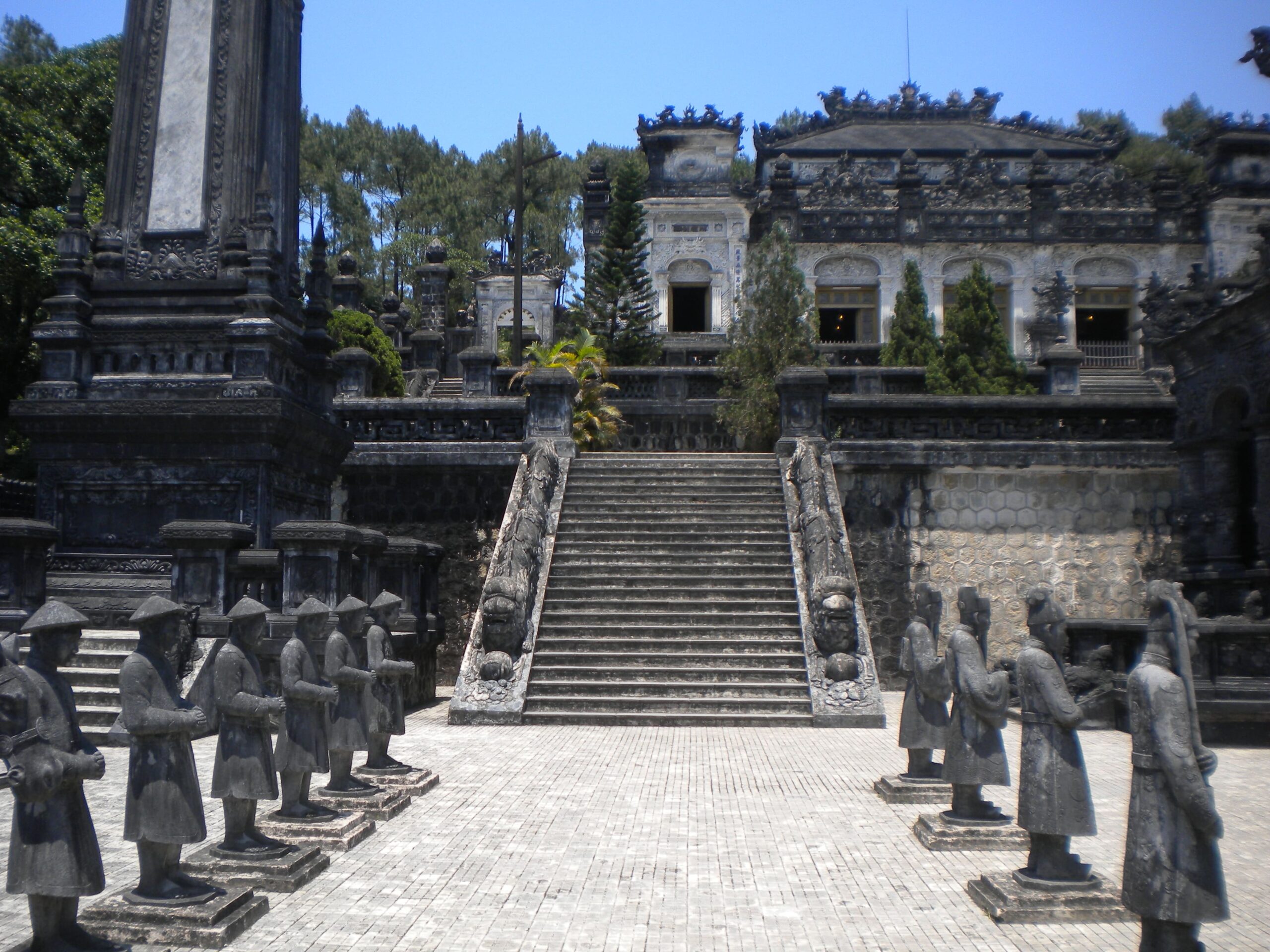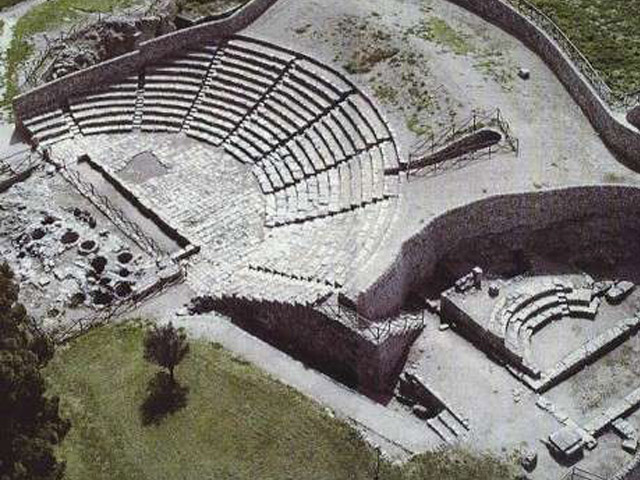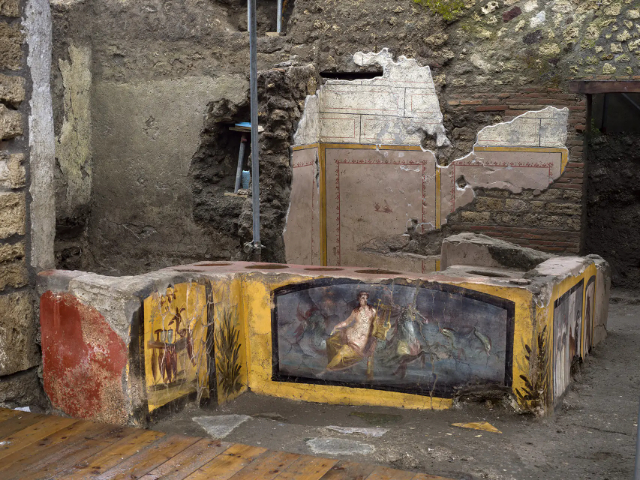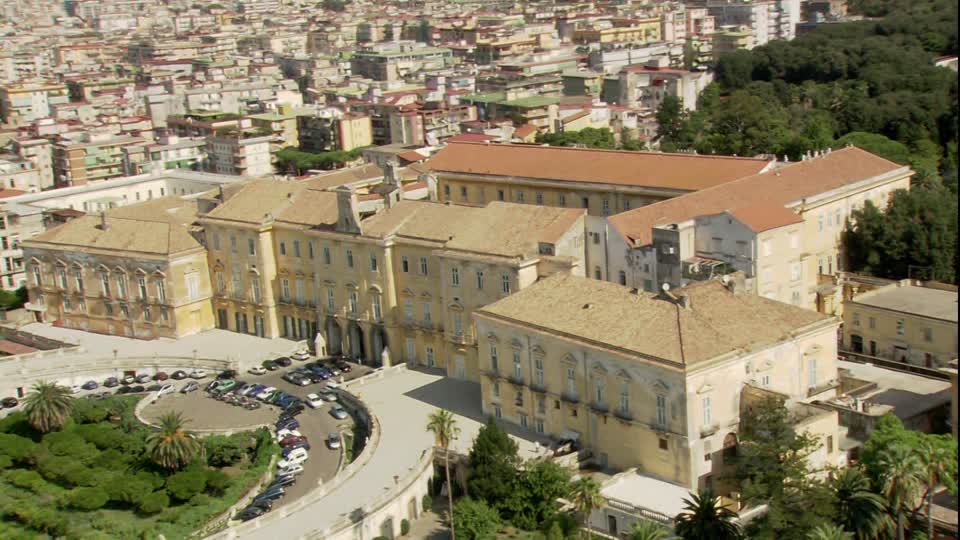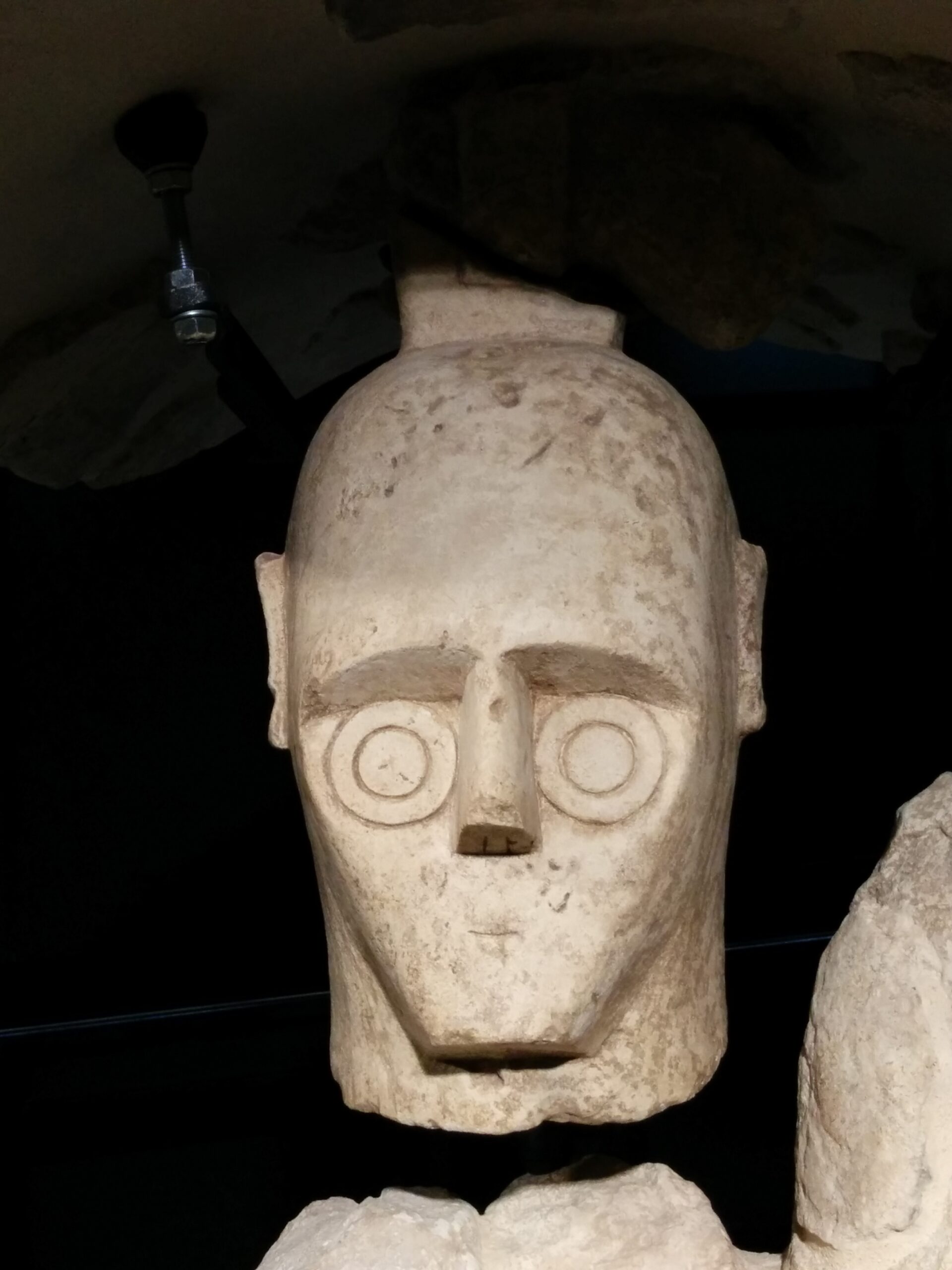Khai Dinh Tomb, located in Chau Chu village approximately 10 kilometers from Hue, Vietnam, is an architectural marvel and a significant historical site. This tomb is the final resting place of Emperor Khai Dinh, the twelfth emperor of the Nguyen Dynasty, who ruled from 1916 to 1925. Unlike the traditional Vietnamese style, Khai Dinh’s tomb is a blend of Eastern and Western designs, reflecting the cultural influences of his reign.
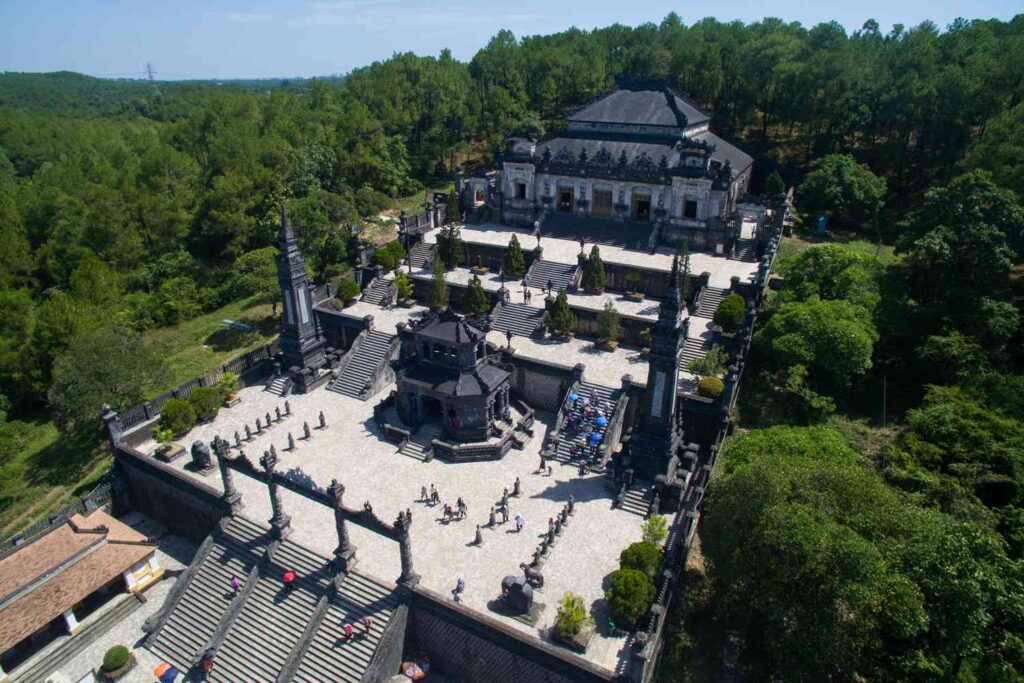
Constructed over a period of 11 years, from 1920 to 1931, the tomb is built into a steep hillside, incorporating elements of modern and ancient, as well as Asian and European architectural styles. The structure is predominantly made of concrete, with the walls, gates, and statues adorned with intricate ceramic and glass mosaic friezes. This choice of materials and the amalgamation of styles make the tomb stand out from other royal tombs in the area, which typically adhere more closely to Vietnamese architectural traditions.
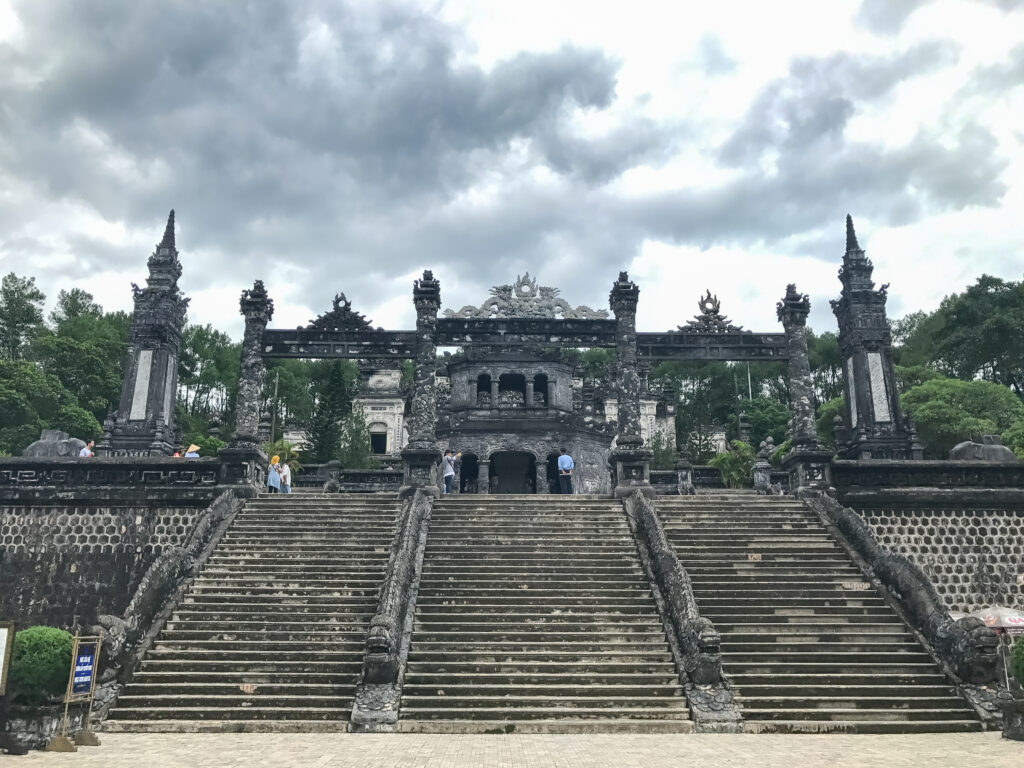
The main building, known as the Thien Dinh Palace, houses the emperor’s tomb and his altar. The interiors are opulently decorated, featuring detailed murals and mosaics made from imported materials, which depict scenes from Vietnamese and European life. The ceiling is painted with nine intricate dragons, and the floor is a detailed mosaic of the emperor’s personal emblem.
Visiting Khai Dinh Tomb offers a unique glimpse into the complex history of Vietnam during the early 20th century, showcasing the influences of French colonialism and the varied tastes of the emperor himself. The site is not only a reflection of Emperor Khai Dinh‘s personal style and preferences but also a testament to the skilled artisans of the time, who adeptly combined various artistic traditions into a cohesive and stunning monument.
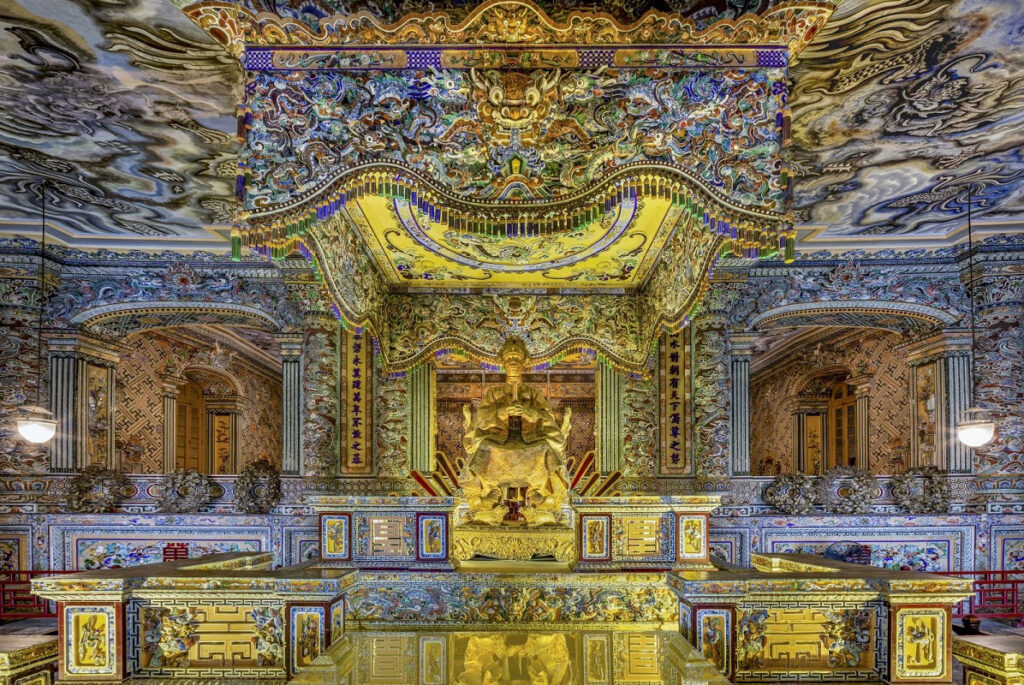
The tomb is a popular tourist destination, attracting visitors with its historical significance and its stunning vistas overlooking the surrounding valley. It remains a poignant reminder of Vietnam’s dynastic history, bridging the past with the present in its unique architectural style.
For those planning to visit Khai Dinh Tomb or exploring the rich heritage of Hue, additional resources such as Secret World offer comprehensive travel guides and tips. Moreover, for those interested in the broader historical and cultural context of Vietnam’s royal monuments, this comprehensive guide can provide extensive information and insights, enhancing the travel experience.

